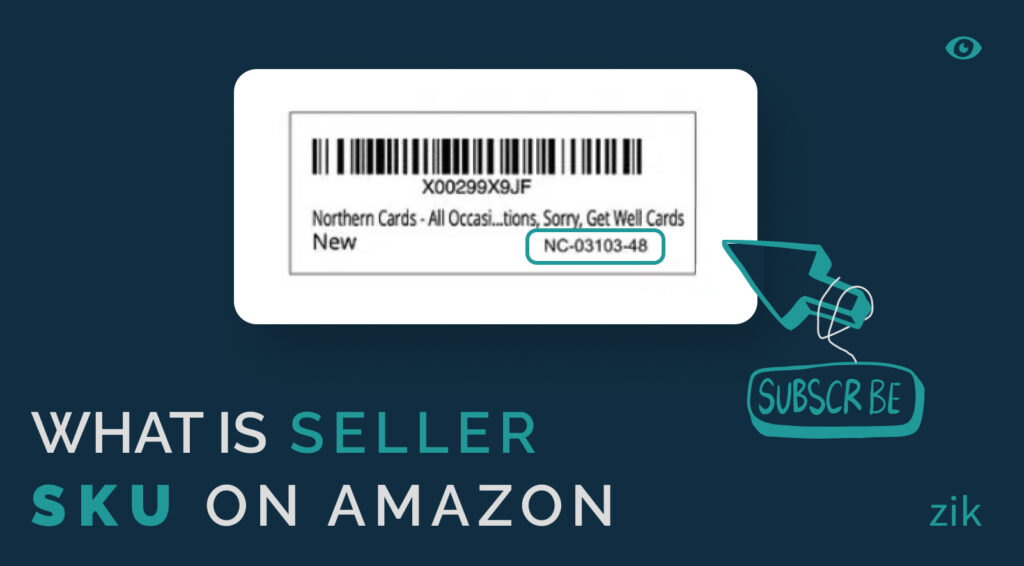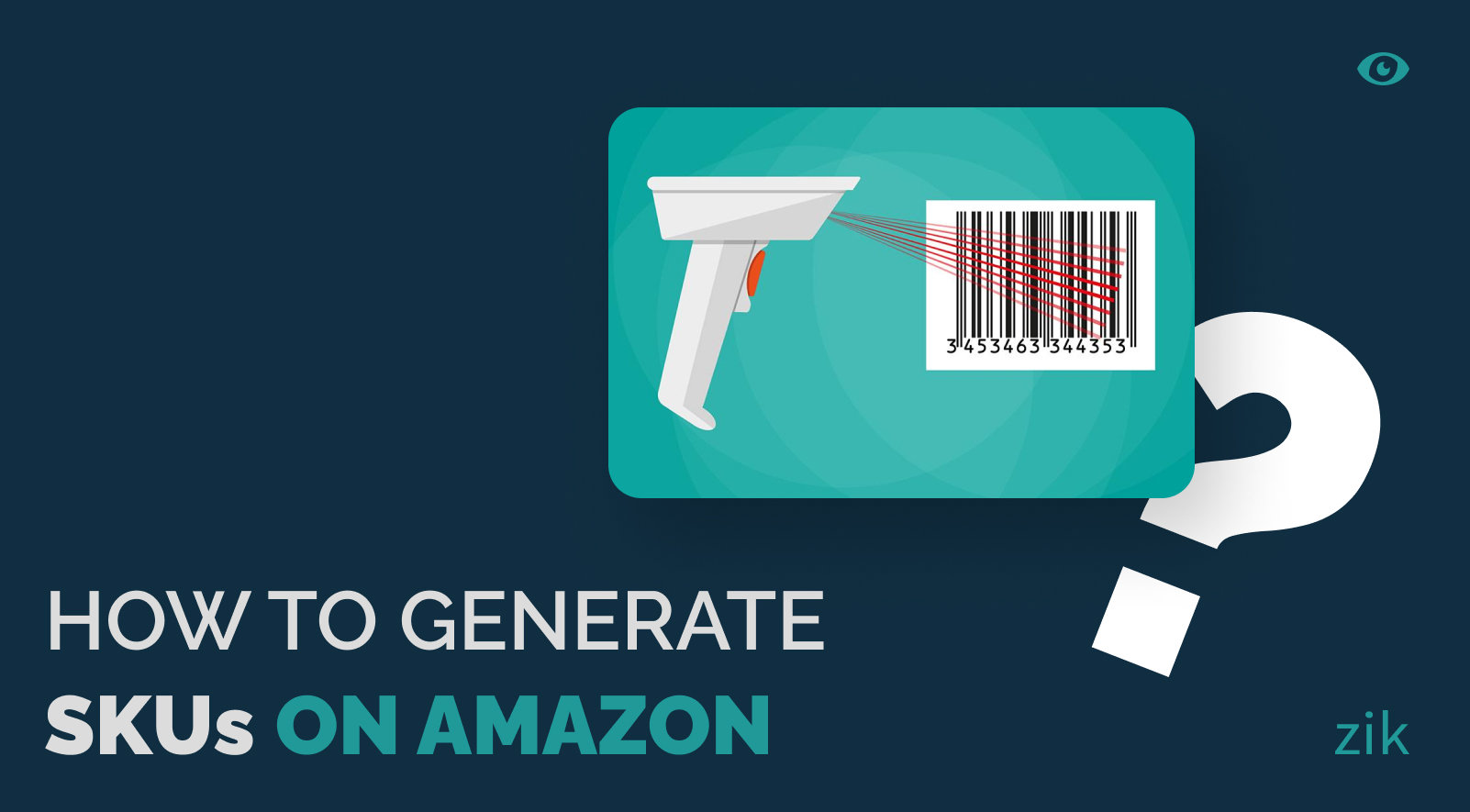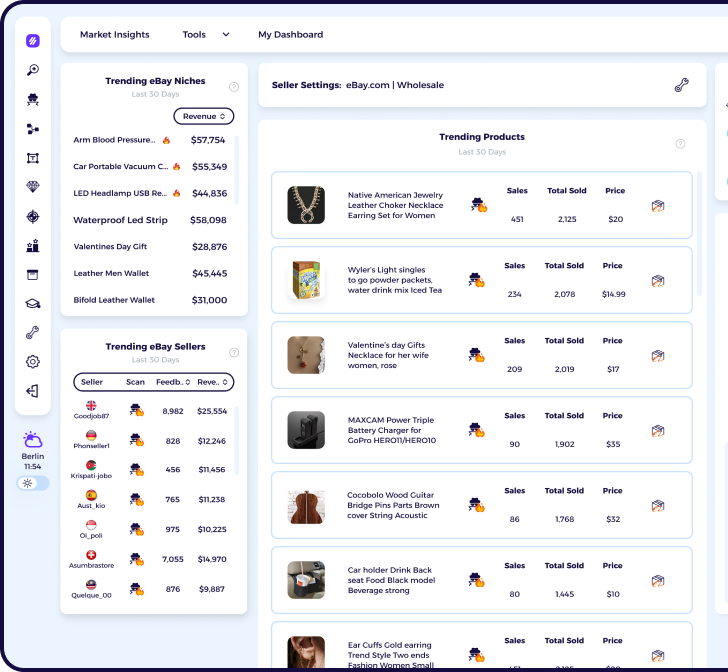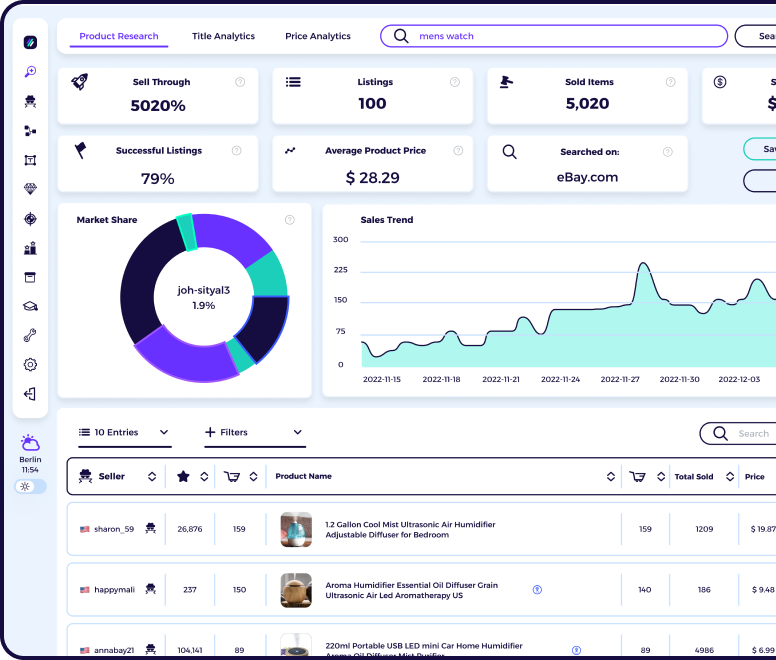If you want to build a successful Amazon business, there are several factors you must consider and learn. You need to abide by Amazon rules for listing, packing, and shipping.
The Amazon Seller SKU is one of those things that you must learn and master if you want to excel in the Amazon marketplace and have a successful Amazon business.
Before you can sell on Amazon, you have to know what the seller SKU means and how it relates to your inventory management.
The seller SKU on Amazon is a tool provided by the ecommerce giant to make tracking and reporting of sales a breeze on the platform! Explore this guide to learn more about the importance of the Amazon SKU and how to use it.
Article Overview
Why Do You Need the Seller SKU on Amazon?
1. Easy Identification of Products Sold
3. Amazon Matching for Correct Product Referral
4. Faster Communication with Suppliers
5. It is Mandatory for Amazon Sellers
Amazon Seller SKU vs Other Product Identifiers
1. Amazon Standard Identification Number (ASIN)
2. Fulfillment Network Stock Keeping Unit (FNSKU)
3. Global Catalogue Identifier (GCI)
4. Global Trade Item Number (GTIN)
5. Universal Product Code (UPC)
6. European Article Number (EAN)
How to Generate SKUs on Amazon
What is Seller SKU on Amazon?
Before you know the ins and outs of running an Amazon business, you need to know about the seller SKU first.
SKU is an acronym that means Stock Keeping Unit. So, what does Stock Keeping Unit have to do with the Amazon marketplace?
The Amazon seller SKU is a combination of letters and numbers that is assigned to a particular product. The custom SKU is essentially a code that makes it easier to track a specific product since there are millions of products sold through Amazon on a daily basis!
In layman’s terms, the seller SKU is like an ID that is unique to that particular product on Amazon. For example, a seller on Amazon lists two smartphones – one is color red and the other one is white.
Even though they are the same make and model, it is important to distinguish them as your customers will want to get a specific color for their smartphone. Therefore, the red smartphone will have a different SKU from the white one.
It is essentially the same product but they have different SKUs because they differ in color.
The Stock Keeping Unit (SKU) is important for sellers to take note of as part of the inventory management system on Amazon. The Amazon generated SKUs are automatically produced by the ecommerce platform.
Another reason for creating SKUs is that it is beneficial not just for the seller, but also for the entire Amazon system.
Think about the fact that there are millions of sellers in Amazon and most of them will have the same products in their online store.
Having your own unique SKU makes it possible for the Amazon systems to detect that the product was purchased from your store and not from another seller.
It is also a good way for the system to determine the amount of products sold for each SKU unit.
While the online buyers might look at similar products on Amazon as being the same, the Amazon SKU system allows the system to distinguish those products from each other.
Simply put, the SKU codes in Amazon enables the platform to determine which seller is attributed for the sale of a product due to the unique SKU on Amazon.
Now that you know what the Amazon SKU means, the next step is to learn how to use the existing seller SKU to manage inventory and for growing your online business.
Why Do You Need the Seller SKU on Amazon?
The Amazon SKU is required for all products sold on the ecommerce platform. It is a valuable tool for the inventory management system to simplify keeping track of certain products.
However, there are other benefits to creating SKUs that you need to learn about.
1. Easy Identification of Products Sold
The primary function of SKU creation on Amazon is to identify the product and to which seller that product is attributed to. The Amazon seller SKUs consist of alpha-numeric codes that are unique so the system can detect what product it is and which seller it is bought from (or listed under).
The unique SKU is also valuable in the creation of inventory file, especially when you are dealing with products sold by multiple sellers or the same product with slight variations (such as different color options).
It is like the Amazon stock identifier number that makes it easy to identify specific products from millions of other products in the Amazon website.
It also aids in the easy identification of long product titles and product details. SKU units make it easier for sellers and the Amazon system to identify them.
2. Easy Data Management
Another importance for the SKU number on Amazon refers to the easy data management for your Amazon business. You can organize your Amazon SKUs in a spreadsheet instead of providing the entire product details.
It will make it easier to find the listings page for a particular product using the SKU on Amazon.
Sellers can take advantage of the SKU codes to streamline the inventory management system and supply chain management.
If you are using a data and management software for your Amazon business, it will be easier to keep track of how many products sold, how many products are in stock, and how many products have been shipped out using the universal product codes.
The use of these codes offer a more efficient tracking system instead of using the entire product details or title.
3. Amazon Matching for Correct Product Referral
Amazon obliges all sellers to create SKUs for their products because it is embedded into the system to make it easier to trace and track each product.
When you input a particular SKU, Amazon will refer users to your listings page if it matches the SKU of that listed item. The system also reads the SKU as a product identifier given that there are millions of other products in Amazon.
4. Faster Communication with Suppliers
For sellers, the use of seller SKUs can improve your supply chain management and vendor strategy. You can use the seller SKU on Amazon to communicate with your suppliers about re-stocking specific products.
Instead of using the product title and name, which can be easily confused with some other products, you can use the seller SKU to ensure that you are referring to a specific product.
It could save you thousands of dollars, time, and effort knowing that the seller SKU will specify the product you need replenished in your inventory file. It will reduce the need to go back and forth with your vendor and streamline the supply chain management system for your business.
5. It is Mandatory for Amazon Sellers
The obvious reason to create product SKUs on Amazon is that the website requires it for Amazon sellers.
There’s a good reason why Amazon imposes it as a requirement because it makes it easy to organize through the multitude of products available on the website. Product SKUs ensure that you don’t confuse a product for a similar listing.
Rules for Amazon Seller SKUs
Before you learn about how to create SKUs, it is important to learn about the essential rules and SKU format that you need to follow.
- Every product listing on your Amazon business must have its own unique SKU.
- You cannot change the existing SKU for a product. First, you must delete the product listing and then add it again before you can create seller SKU in the inventory file.
- For the existing SKU, any new information or file uploaded to the Seller Central account will be automatically applied for the recently updated inventory file.
Amazon Seller SKU vs Other Product Identifiers
If you’ve been selling on Amazon for a while, you are aware that there are other product identifiers available aside from the existing seller SKU. Knowing the difference will help you understand the importance of Amazon generated SKUs.
1. Amazon Standard Identification Number (ASIN)
The ASIN is a 10-character product identifier that is assigned to every product listed on Amazon. This code is consistent regardless of where you see the product on the website.
Amazon sellers cannot change or modify the ASIN while you have the opportunity to create unique seller SKUs.
2. Fulfillment Network Stock Keeping Unit (FNSKU)
The FNSKU is another code that can be used to identify specific products on Amazon. This code is designated for products that are shipped through Amazon’s fulfillment centers, or via the Amazon FBA program.
For example, if you have 100 items to be processed in Amazon’s fulfillment centers, you need 100 unique SKUs for those products so that Amazon can determine which order is going to which customer.
This unique code only applies to Amazon FBA orders and is marked clearly in the shipment labels.
3. Global Catalogue Identifier (GCI)
When you register your product in Amazon, you can choose between the UPC or GCI code. If you choose the GCI option, Amazon will provide the code for you. Select GCID in the options and leave the Product ID field empty.
You will be asked to input the specific details of your product and the SKU number and it will automatically generate the GCI code for you.
4. Global Trade Item Number (GTIN)
This is a global product identification system that is used across global marketplaces, not just Amazon. This universal product code is used to identify unique products and variations for the same product.
Unlike SKU, you can use the GTIN to identify a single product worldwide while the multiple SKUs refer to various products with unique variations.
5. Universal Product Code (UPC)
This code is assigned by the manufacturer of a given product. Amazon does not have the power to change the UPC, even if there are multiple products from the same manufacturer on the Amazon marketplace.
Therefore, you will need multiple SKUs for a similar product with variations upon listing to Amazon.
6. European Article Number (EAN)
This code is only available in Europe, although it is recognized worldwide. The EAN-13 is the most common type and the standard for this product identifier.
How to Generate SKUs on Amazon
The steps involved to create SKUs on Amazon is easy to follow. There won’t be a need for an SKU generator because you can do it on your own, as long as you follow the exact SKU format that is required in Amazon.
There are two options available for SKU management on Amazon: 1) customize your own SKUs, or 2) letting Amazon generate SKUs.
Customizing Your Own SKUs
There are a few details that you must include during SKU creation, such as the following:
• Company or brand name
• Model or color
• Size
• Variant
You will also need to supply other information about the product, such as the supplier, features, condition, product category, purchase price, seasonality, and the name of the product.
You should not limit yourself to the above product attributes because you are free to add your own, if you think it is relevant to your product listings.
Amazon Generated SKU Codes
Another option for generating seller SKU is to let Amazon create it for you. It will take away the hassle of creating your own SKUs, but it will lead to a few challenges in the future.
For example, Amazon will automatically generate multiple SKUs for the same product if they are listed to two different shops, even if you own both shops.
If you run multiple businesses, it can be more time-consuming keeping track of products sold if similar items are assigned multiple SKUs across various sources.
Another challenge with Amazon seller SKU generated by the system is that it would be difficult for you and your team to keep track of. Unlike SKU you created and customized, the codes are randomly assigned, so you cannot easily track the SKUs.
Best Practices for SKU Creation
The SKU system can simplify the tracking and monitoring of your stock keeping units and streamline your inventory management system.
Make sure to keep these practices in mind when creating seller SKU on Amazon for maximum benefits:
- Determine a seller SKU structure for all your custom SKUs. You can establish a structure around a specific product category or other product attributes. Make sure to keep everyone on your team informed about the guidelines for creating SKU to ensure that everyone is on the same page and can easily identify your products.
- Avoid starting your SKU with 0. This can create confusion when you are using a data and management software for your products.
- Employ the same seller SKU structure for products with the same variations. For example, use the same SKU format for distinguish the different colors for a particular product.
- Refrain from adding dates and other variables to your seller SKU. It will easily make your existing SKUs obsolete, which will force you to create a new SKU if you upload a new inventory file. It could make it a hassle to manage inventory in your Amazon account.
Conclusion
Aside from being mandatory for Amazon sellers, it is important to use seller SKU on Amazon because it offers several benefits. You can take advantage of the ability to customize and create unique SKU codes to simplify data management for you and your team.
It is a small step but can play a big role in how you run your business. If you want to succeed, you need to be organized and inventory management is just one aspect of it, but it can make a huge difference!
Be sure to check out the best practices listed above to create product SKUs that streamline your business management procedure.
FAQs
How do I find my Amazon product SKU?
You can find the seller SKU on the packaging label of the product. You can also find the SKU on the receipt of your order. The product SKU is made up of seven digits, but some can be shortened to four digits.
Is an SKU the same as a barcode on Products?
No, the unique product code is different from the SKU on Amazon. The Amazon SKU is unique to the Amazon marketplace and can only be used internally.
Can you Change the Amazon Seller SKU for a Product?
Yes. However, you will also have to delete the product from the listings page because the SKU is linked to that. Once you create a new listing, you may update the new SKU for the specific product.
Should I let Amazon create my Seller SKUs?
It is possible to let Amazon generate your SKU, however there are a few downsides to it. Creating a custom SKU is more beneficial because it will be easier to facilitate a streamlined inventory management.








